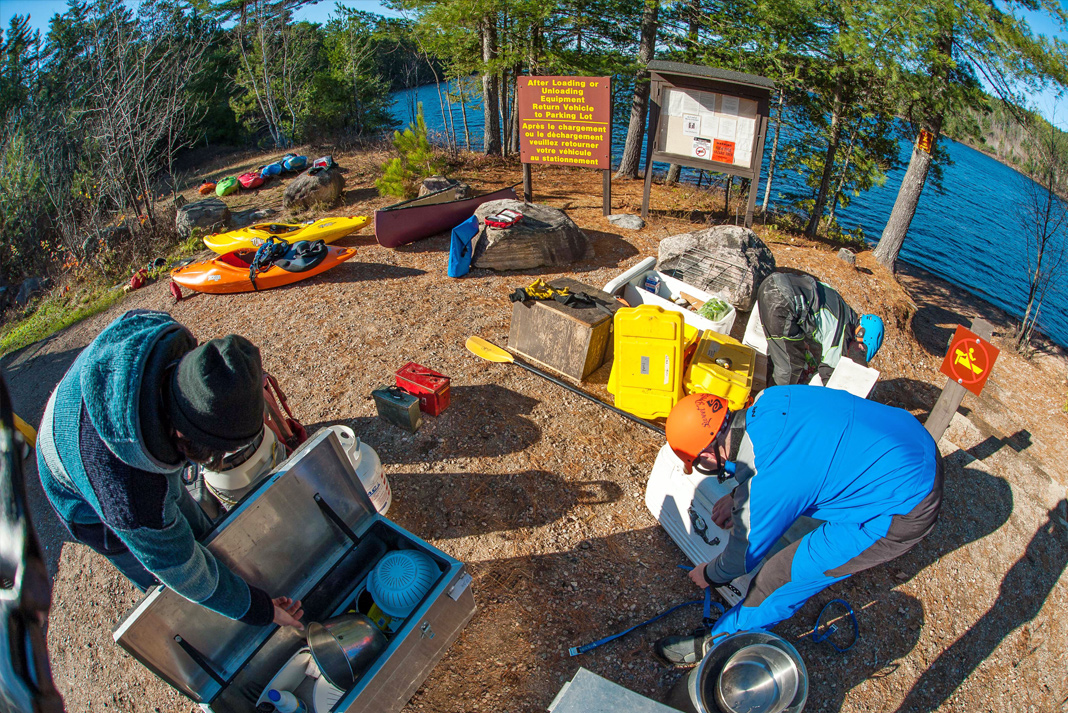I’ve been immersed in the river guide world for more than 30 years. I can’t even start to count how many pairs of river shoes, PFDs, sun shirts, knives and tubes of sunscreen I’ve gone through. Probably almost 30 of each, pretty much one every year. No surprise then, that like most river guides, I’m not particularly sentimental about my gear—we’re a pretty utilitarian bunch.
Except for my ammo box.
I still have my original, hastily spray-painted behind the raft gear shed with just a single coat of purple. The color was not so much chosen as it was the only can of paint I could find lying around. I purchased the box for $5 in my third year of guiding, which was my first season as a multi-day raft guide. As a day guide, I had no use for one and, like most day guides, did not even know they existed. Heck, unless you shoot machine guns for a living or run heavy oar rigs, there is no need to know they exist.
Ammo boxes are military-grade metal boxes designed to store ammunition. Up until World War II, machine gun bullets were kept in wooden crates. They had the nasty trait of being flammable and the cause of many explosions. Whole warehouses would go up at once.
Enter the metal ammo box: fireproof, waterproof, indestructible and, for a long time, very cheap. Army surplus stores used to sell these things for a couple of bucks each. River guides were partial to the 50-caliber sized boxes—about the size of a lunch box—and also the larger 40-mil version, used to make portable toilets affectionately known as groovers, but that’s another story.
Ammo boxes have a hinged lid that snaps tight and a handle on top. Rigged into the raft properly, usually along the side rail of the rowing frame, they are easily accessible. A flip of the lid accesses sunglasses, binoculars, guidebooks, a toothbrush—whatever a guide might need to pull out during the day. Rafting clients are often fascinated by these boxes, given how guides rarely step off their boat without them in hand. They think they contain some kind of magic.
No magic here. Just the essentials. What they contain has always been pragmatic, but what the box represents is significant. This, I believe, is what clients sense. Sometimes the things we do or the things we own represent more than what they seem.

A guide’s ammo box is private but also represents his or her identity and personality. It is not cool to go into another guide’s ammo box for any reason. If a guide wants something in your box, such as a river map, they should bring the box to you and ask for the map. The owner duly opens it and hands the map over. The same goes for sunscreen, a bird book, whatever.
Being indestructible, ammo boxes make ideal mini stools. As you can imagine, it is not okay to squat on someone else’s box. I never sit on mine. Sitting on it crushes the rubber gasket, compromising the waterproofness.
There was a time when ammo boxes were in decline. A move to plastic made them harder to get. Some guides also took issue with having sharp metal edges in their cockpit, although this concern is a bit moot in a loaded oar rig full of sharp metal edges and is a floating entrapment machine as it is.
Now ammo boxes are experiencing a bit of a resurgence. In this age of Alibaba, they are readily available again and cheap, if you are willing to order 500 at a time.
I think the metal ammo box is seen by new guides as a declaration of identity in a way plastic cases or drybags never will. The tradition it represents shows respect for the river guide lineage, present in the guides’ working world.
Metal ammo boxes have been on rafts since the beginning of rafting back in the ‘50s. As utilitarian as we are, we can imbue our few personal working tools with importance beyond their size. What’s inside a guide’s ammo box is less important than what it says.
Jeff Jackson is a professor at Algonquin College on the banks of the Ottawa River.








